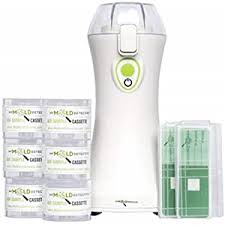The Effectiveness of DIY Mold Test Kits: A Comprehensive Guide
Mold growth in homes can pose a threat to the health and well-being of the occupants. Identifying the presence of mold is crucial for effective remediation. DIY mold test kits have emerged as a cost-effective solution for homeowners to detect mold and take necessary actions promptly.
What are DIY Mold Test Kits?
Mold test kits are designed to detect the presence of mold in indoor environments. These kits typically consist of various components such as collection swabs or tapes, petri dishes, and sometimes a mail-in option for laboratory analysis. They are readily available at hardware stores, online marketplaces, or local retailers.
How to Use a DIY Mold Test Kit Effectively
Using a mold test kit is relatively simple. First, identify the areas suspected of harboring mold. These could be areas with moisture, water leaks, or visible signs of mold growth. Follow the instructions provided with the kit carefully. It usually involves swabbing or taping the suspected area or allowing the kit's petri dish to collect airborne mold spores. Ensure the sample is collected properly, then seal the kit and send it for analysis, if necessary.
Interpreting DIY Mold Test Kit Results
Interpreting the results from a mold test kit can be a bit tricky. Some kits provide on-the-spot results, while others require you to send the sample to a laboratory for analysis. Positive results indicate the presence of mold, while negative results don’t necessarily mean the absence of mold. If the test is positive, it’s advisable to seek professional help for further assessment and remediation.
Mold test kits, while useful, do have limitations. They might not identify the specific type of mold present or provide accurate quantification. Environmental factors and mold variability may also impact the accuracy of these kits. Therefore, while they can be a good initial step in identifying potential mold issues, professional testing might be necessary for a more comprehensive assessment.
The End
DIY mold test kits offer a convenient and cost-effective means for homeowners to initially identify potential mold presence within their homes. However, they should be seen as a first step rather than a definitive answer. If mold is detected or suspected, consulting a professional mold remediation service is recommended for a more detailed assessment and effective remediation.
Mold can cause health problems and damage to property, making it crucial to address the issue promptly. By being aware of the limitations of mold test kits and understanding how to effectively use and interpret their results, homeowners can take the necessary steps to ensure a healthy living environment for themselves and their families.


Comments
Post a Comment